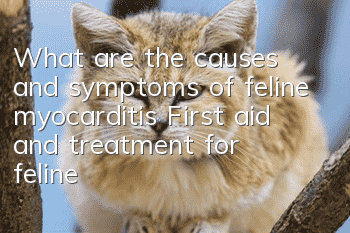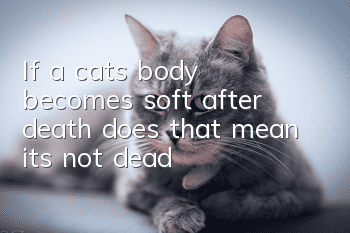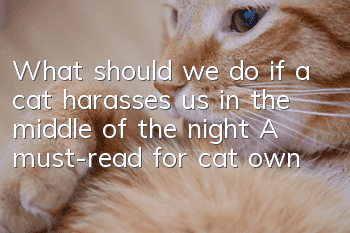What are the causes and symptoms of feline myocarditis? First aid and treatment for feline myocarditis

Cat myocarditis is usually secondary to other diseases. Clinically, acute non-suppurative myocarditis is the most common disease. Let’s learn about the causes of myocarditis in cats?
Causes of myocarditis in cats
Usually secondary to or complicated by certain infectious diseases (parvovirus infection, canine distemper, viral hepatitis, pseudorabies (detailed introduction), leptospirosis, streptococcus infection, etc.), parasitic diseases (trypanosomiasis diseases, canine heartworm disease, Toxoplasma gondii infection, etc.) and poisoning diseases (poisoning by military poisons, mercury, arsenic, phosphorus, antimony, tetrachlorethylene, etc.). Allergy to certain serum preparations, penicillin and sulfa drugs, and hyperkalemia can cause this disease. Myocarditis can also develop from pericarditis or endocarditis.
What are the clinical symptoms of myocarditis in cats?
Most cases of myocarditis caused by acute infectious diseases include fever, depression, loss of appetite or insomnia. The most prominent clinical manifestation is an increase in heart rate that is incompatible with the increase in body temperature. The heart rate of sick dogs and cats suddenly accelerates when they exercise for a while. After the exercise stops, the heart rate continues to increase even after 2 to 3 minutes. It takes a longer period of rest to return to the heart rate before exercise. Some have arrhythmias and arterial pressure drops. When the compensatory ability of the heart decreases, symptoms of heart failure such as loud first heart sound, weak second heart sound, weak pulse, cyanosis, edema, and surface venous distention may appear. Electrocardiogram examination revealed sinus tachycardia at the beginning of the disease, followed by varying degrees of single- or multi-source premature ventricular contractions, atrial fibrillation, paroxysmal tachycardia, atrioventricular block and bundle branch block. In the later stage, the R (or S) wave voltage decreases, and most dogs that die suddenly have ventricular fibrillation.
In addition to the above symptoms, most of the sick dogs and cats are accompanied by symptoms of the primary disease and eventually die of heart failure.
Feline myocarditis can occur in cats of any age. The cure rate can be determined based on the severity of the cat’s condition. Of course, when treating any disease, care is very important. Let’s learn about the treatment and first aid of cat myocarditis.
Cat myocarditis treatment and first aid
The key points of first aid are: actively treat the primary disease, enhance myocardial contractile function, reduce the burden on the heart and improve myocardial nutrition.
1. Use antibiotics, sulfa drugs, or specific antidotes, hyperimmune serum, etc. to treat the primary disease.
2. It is not advisable to use cardiotonic drugs at the beginning of the disease to avoid overexcitation of the myocardium and rapid heart failure. Cold compresses on the heart area can be used. In the later stages of the disease, when myocardial contractile function decreases, 20% sodium caffeine injection should be used for subcutaneous or intramuscular injection. The dosage for dogs is 0.5 to 1.0 ml. It should be pointed out in particular that digitalis preparations are prohibited drugs for this disease because they have the ability to increaseStrengthening myocardial excitability, delaying conductivity, and prolonging myocardial diastole can lead to heart failure and even death.
3. With reference to heart failure, use diuretics and preparations to improve myocardial nutrition, such as furosemide, glucose, ATP, etc.
4. Strengthen care, provide easy-to-digest and nutritious feed, and limit sodium intake.
- What should I do if two cats keep fighting?
- How long does it take for a cat to grow hair after shaving?
- Why do cats hate bathing? Are all cats afraid of water?
- What are the symptoms of Siamese cat pregnancy?
- Main causes of vomiting in cats
- What should I do if my Persian cat suffers from heatstroke? The most important thing for the poop shoveler in summer!
- Master these tips to help your cat remember his name!
- Will cats die if they get rhinitis? How to deal with rhinitis?
- How to properly care for your cat’s teeth?
- What should an owner do when a cat steps on the milk?



